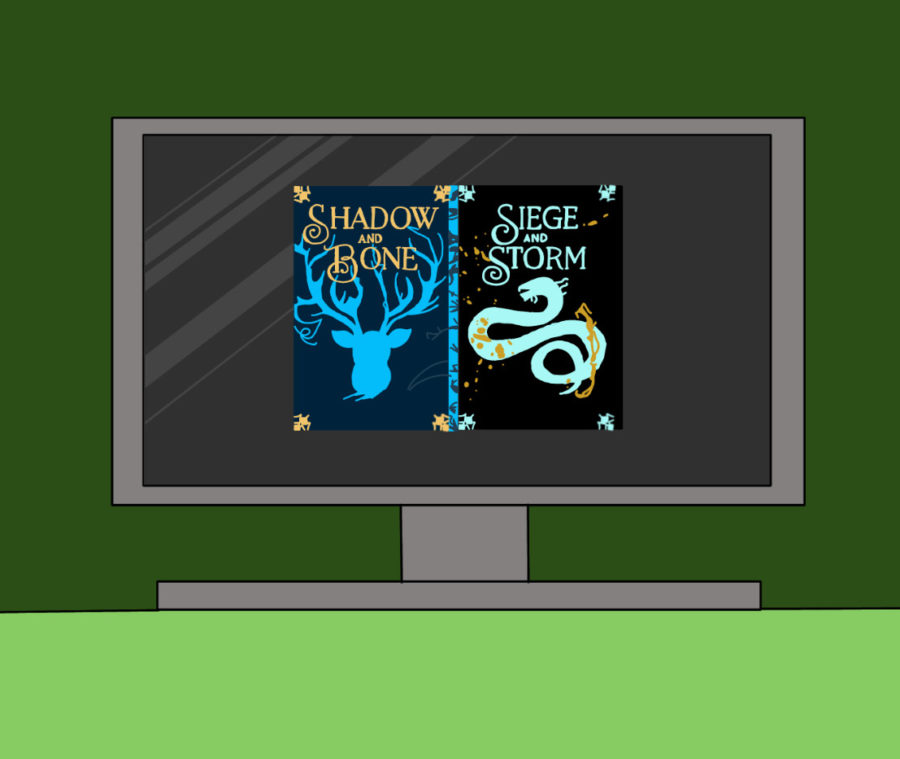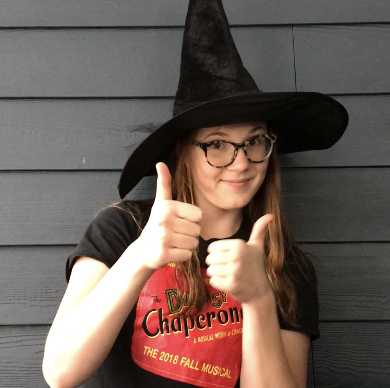“Shadow and Bone” represents what YA adaptations can be
June 1, 2021
As a lifelong bibliophile, I say this after heavy consideration: the “Shadow and Bone” TV adaptation is actually better than the book it was based on.
If you’ve spent any time in certain Tumblr platforms or the Young Adult section of Barnes and Noble, you’ve likely heard of at least one series written by American author Leigh Bardugo. “Shadow and Bone,” released this April on Netflix, is based on her debut novel of the same name and incorporates characters from her “Six of Crows” novels, set in the same universe.
The series is set in the “Grishaverse,” a world where a select few (known as Grisha) can manipulate matter in various ways. In the country of Ravka, all Grisha serve in the ‘Second Army,’ under the command of General Kirrigan (Ben Barnes), a Grisha who can control shadow. Although initially believed to be an ordinary cartographer, when attacked while crossing the ‘Fold’ (a wasteland populated by carnivorous monsters that divides Ravka in two), teenager Alina Starkov (Jessie Mei Li) summons light; she is immediately swept away from her best friend Mal (Archie Renaux) and military life in order to reach her full Grisha potential. At the same time, a group of criminals known as “Crows” from the city of Ketterdam are hired to kidnap Alina, and a Grisha named Nina (Danielle Galligan) is captured by a group of Grisha-hunters. Of course, not all is as it seems, and there’s plenty of magic, mayhem, and betrayals to be had in the eight-episode series.
From the get-go, the art direction is a high point of the series, with beautifully designed sets and costumes. Perhaps even more importantly, the art design sharply distinguishes the two main plotlines; Ketterdam is all dark palettes, gritty textures, and shadowy lighting, filmed with close, almost claustrophobia inducing cinematography, while Ravka’s scenes are dominated by airy wide shots and neutral tones.
“Shadow and Bone” generally keeps the somewhat predictable plot of its source material, but much of the adaptation’s strength lies in its few but key changes. Alina is portrayed as half-Shu (the Grishaverse’s equivalent of East Asian), and faces microaggressions and xenophobia throughout the series; although they don’t define her character arc, it’s nice to see a series directly addressing racism in a genre that has historically had significant issues regarding racial diversity, especially one based off of a book with an almost exclusively white cast.
The series also tightens certain plot points and strengthens the somewhat lackluster conflicts and relationships from the book; Kirrigan and Mal become more nuanced characters with increased time dedicated to their stories, and the Fold becomes pressing and menacing beyond the traditional action-packed scenes. The most powerful reminders of the danger of the Fold—even if the specific threats it poses remains somewhat vague throughout the series—are often in scenes where it doesn’t appear at all, when characters are allowed to react to the announcement of a Sun Summoner who can prevent civil war and further destruction.
“Shadow and Bone” is definitively not a show that you can scroll through your phone during, and quite frankly, it would be terrible if it was. One of the strongest parts of the source novels is the intricacy, both in worldbuilding and regarding characters, and the show largely manages to conserve that. Worldbuilding and character backstory occasionally comes from overburdened dialogue, but most of the magic and histories of the Grishaverse are incorporated smoothly, creating a setting that feels realistic and fleshed out.
However, the combination of two of Bardugo’s books doesn’t work quite as seamlessly. For those who haven’t read “Six of Crows,” the Crows and Nina subplots are initially confusing and feel slightly irrelevant. While the addition of plot elements from another Grishaverse novel helps fortify the plot (and the runtime), there does seem to be the implication that a viewer should already know who these characters are. The Crows initially feel somewhat forced into the show, and there are often moments that feel more like they’re setting up for the next series than actually contributing to the conflict. Yet there are some solid moments of character development that will likely come into play during the upcoming “Six of Crows” adaptation, and there’s the added benefit of covering a lot of the chunky backstory that drags the novel down in places.
There may be a few plot points that fall too easily into place, a couple muddied explanations, and a significant benefit to having read the books before viewing, but “Shadow and Bone” represents what an adaptation should be: a series that preserves strengths of its source material while streamlining the plot and improving the weaknesses. If you’re looking for the next hit fantasy series, “Shadow and Bone” just might be it.


